How to solve fit issues
A poor fitting bra is no fun. Here’s how to diagnose and solve common fit issues:
Straps falling off
It could be because...
- Straps are too loose
- Bra size is too big
- Bra style does not have fully adjustable straps
- Bra style has wide-set straps that may not fit your body shape
- Bra is old with straps that have stretched out
Here are some ways to fix it:
- Tighten straps to fit comfortably over your shoulders. Check and re-adjust sliders after wash as they can move especially when machine washing bras
- Get re-measured and wear the correct size. Straps are more prone to slipping with a bra that's too big for you because they are set further apart
- Wear bras that have fully adjustable straps that can be tightened to a length that's suitable for you. Avoid bras that have partially adjustable straps
- Wear bras that have more narrow-set straps (straps that are closer in instead of straps that sit at the edge near your underarms) or wear bras with a racerback style/bras that have a J-hook
- Retire your old bra and buy a new bra. Straps naturally stretch after wash and wear and lose their elasticity over time
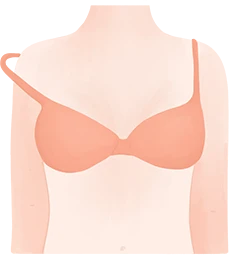
Straps digging in
It could be because...
- Strap width is too narrow
- Straps are tightened too much
- Bottom band is too big or has stretched out over time
Here are some ways to fix it:
- Wear bras with wider straps. Most women find at least a 10-12mm strap width sit comfortably on their shoulders
- Too tight isn’t right. Loosen straps so you are able to lift them up one inch (around the height of two fingers)
- Time for a fitting or a new bra. Consider wearing one band size smaller. For example, if you have this problem when you wear a 34C, try wearing a 32D (learn about sister sizing to help with this)
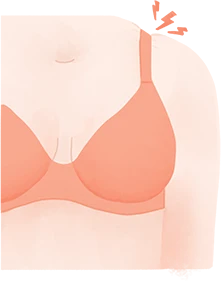
Band riding up the back
It could be because...
- Not using the tighter hook-and-eye closures
- Band size is too big
Here are some ways to fix it:
- Move to the tighter or tightest closure as the band stretches out over time
- Time for a fitting or a new bra. Consider wearing one band size smaller. For example, if you have this problem when you wear a 34C, try wearing a 32D (learn about sister sizing to help with this)
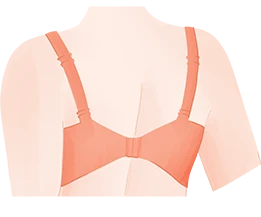
Cups gaping at the top
It could be because...
- Cup size is too big
- Bra style doesn’t suit your breast shape
Here are some ways to fix it:
- If the band fits comfortably, consider going down one cup size. For example, if you have this problem when you wear a 34C, try a 34B. If the band isn’t fitting comfortably, it’s time for a fitting.
- If you have less breast tissue at the top of your breast, this cup gaping issue tends to happen. Avoid moulded and/or padded bras that have a defined/perfect shape and opt for a bra with seams that can contour to your natural shape.
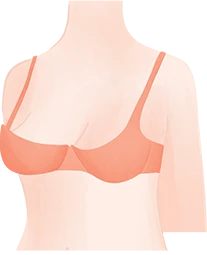
Overflowing at the top or the sides
It could be because...
- Cup size is too small
- Bra style doesn't suit your shape
- Band is too loose
Here are some ways to fix it:
- If the band fits comfortably, consider going up one cup size. For example, if you have this problem when you wear a 34C and the band fits fine, try a 34D. If both the cup and the band is too small, it’s time for a fitting.
- Choose bra styles that provide more coverage in the cups and/or the wings area.
- Check if your bottom band is riding up. If it is riding up, you should try a smaller band size but also a larger cup size. For example, if you wear a 34C when this happens, try a 32D.
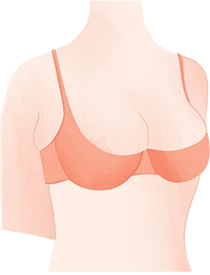
If your bras simply don't fit well anymore, it could be time to get re-measured. You should be measuring your size every six to nine months as your body goes through changes. Learn how to measure yourself at home here.
If you're experiencing these issues or any other issues and would like to chat about them, feel free to reach out to us. We're here to help!
